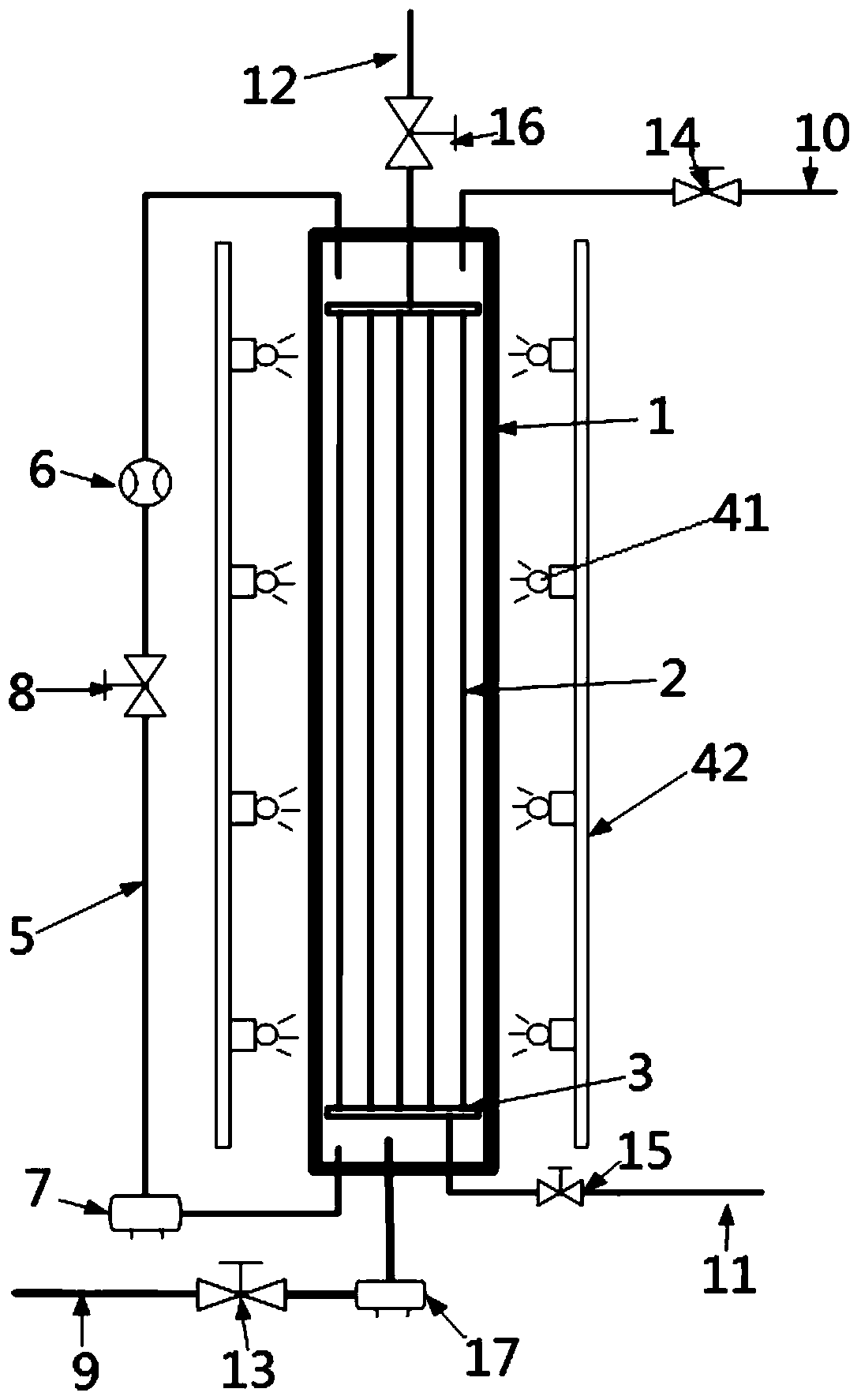A kind of membrane aeration bacteria and algae biofilm system and its application
A biofilm system and aeration bacteria technology, applied in the field of membrane aeration bacteria and algae biofilm system, can solve the problems of long sewage treatment cycle, difficult sludge treatment, and many equipment, etc. The effect of stable growth and avoiding secondary pollution
- Summary
- Abstract
- Description
- Claims
- Application Information
AI Technical Summary
Problems solved by technology
Method used
Image
Examples
Embodiment 1
[0040] Such as figure 1 Shown, a kind of film aeration bacteria algae biofilm system, this system comprises reactor 1, the aeration diffuser 3 that is arranged in reactor 1, the aeration membrane 2 that is fixed on the aeration diffuser 3 and is arranged on The sewage circulation unit on the reactor 1, the bottom of the reactor 1 is provided with a water inlet pipe 9, the top is provided with an outlet pipe 10, the bottom 3 of the aeration diffuser is provided with an air inlet pipe 11, the top is provided with an exhaust pipe 12, and the aeration membrane 2 Microorganisms and microalgae grow on the load.
[0041] The system also includes lighting units arranged on both sides of the reactor 1. The lighting unit includes a support plate 42 and a plurality of fluorescent lamps 41 arranged on the support plate 42. There are 4 fluorescent lamps 41 in total, which are evenly arranged on the support plate 42 at equal intervals. superior. Wherein, the sewage circulation unit includ...
Embodiment 2
[0052] In this embodiment, natural light is adopted, no lighting unit is required, and the aeration membrane 2 is a tubular aeration membrane. All the other are with embodiment 1.
[0053] This example is applied to the research on the treatment process of livestock and poultry breeding sewage in a farm. The influent water quality in this project is: COD 500-685mg / L, ammonia nitrogen 240-370mg / L, total nitrogen 450-658mg / L, total phosphorus 30-50mg / L; Flow system, the actual hydraulic retention time is greater than this value; the light is natural light, the light intensity is 2500-4500lux, and the light cycle is roughly 13 hours / 11 hours. After being treated by the membrane aerated bacteria and algae biofilm system in this embodiment, the effluent water quality reaches: COD 45-67mg / L, ammonia nitrogen 10-40mg / L, total nitrogen 90-130mg / L, and total phosphorus 3-9mg / L. The treatment effects of this embodiment in sewage treatment are: COD removal rate 86.6-95.2%, ammonia nitr...
Embodiment 3
[0055] In this embodiment, there are 8 fluorescent lamps 41 in the lighting unit, which are evenly arranged on the support plate 42 at equal intervals, and the aeration membrane 2 is a tubular aeration membrane. All the other are with embodiment 1.
PUM
 Login to View More
Login to View More Abstract
Description
Claims
Application Information
 Login to View More
Login to View More - R&D
- Intellectual Property
- Life Sciences
- Materials
- Tech Scout
- Unparalleled Data Quality
- Higher Quality Content
- 60% Fewer Hallucinations
Browse by: Latest US Patents, China's latest patents, Technical Efficacy Thesaurus, Application Domain, Technology Topic, Popular Technical Reports.
© 2025 PatSnap. All rights reserved.Legal|Privacy policy|Modern Slavery Act Transparency Statement|Sitemap|About US| Contact US: help@patsnap.com

